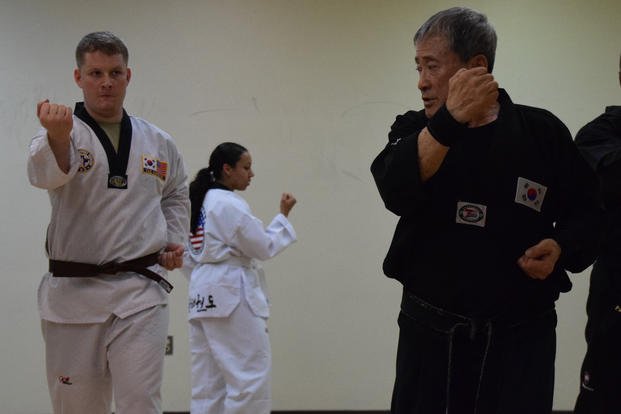This article was inspired by a former Marine who asked about staying active through his 60s, 70s and 80s.
Here is his story and question about longevity:
"I'm a 55-year-old former Marine 1969 to 1973. I've been in the Martial Arts since I was 15. I'm a Tae Kwon Do instructor and have maintained my conditioning all of my life. I train every morning from 4 a.m. to 5 a.m., using the methodologies I am accustomed to. I know in reality, though, that it's only a matter of time until the old body won't be able to keep up with what my mind wants it to do. My question is simple. Do you have some general advice for us older folks to stay in great shape going into our 60s, 70s, and 80s?"
Sir, you are exactly right. I highly recommend, as you age, that you maintain a fitness level that enables you to move around without effort. Once you are in your mid-50s or 60s, it is easier to maintain fitness than to try to get into shape. Fortunately, obtaining a higher fitness level is possible at any age.
Bravo to all of you who are above 50 years old and already in shape. You are way ahead of the power curve, but it is important to train smart as you age in order to decrease the chances of nagging injuries that could sideline you for weeks or months.
The key to longevity is to focus on more flexibility training as well as start adding some non-impact aerobic activity. Flexibility programs like yoga or even a daily stretching plan, as recommended in "The Stretching Plan" article, will get you well on your way to building more flexible joints. Non-impact aerobic activities like swimming, biking, rowing, roller-blading and elliptical gliding are great forms of cardiovascular exercise. These activities will help you burn calories and fat, build muscle and strengthen bones while protecting the joints from unnecessary pounding.
As I age, I plan on making swimming and yoga a near-daily routine. The zero-gravity effects of swimming and yoga make them ideal ways to maintain cardiovascular health and joint fitness. Your fitness program still can involve lifting, PT and running, but being more flexible will make you less susceptible to injuries that could sideline you for several weeks.
For those of you who are trying to get started with a fitness routine -- whether it's your first time ever or if you've taken a few decades of vacation from a fitness routine -- there is hope as long as you can fit fitness into your schedule. In only minutes a day, you can go from being sedentary to a higher fitness level. If you or any of your family members are in that position, download the free "45-Day Beginner Program" (PDF) and send it to your friends or family members who need to start exercising. This plan has everything you need to get started with stretching, gentle exercise, motivational stories and an eating plan to help you lose weight without dieting.
Stomach size is an early indicator of many preventable diseases to include diabetes and other ailments, such as hypertension, high blood pressure and high cholesterol, to name a few.
Stew Smith is a former Navy SEAL and fitness author certified as a Strength and Conditioning Specialist (CSCS) with the National Strength and Conditioning Association. Visit his Fitness eBook store if you're looking to start a workout program to create a healthy lifestyle. Send your fitness questions to stew@stewsmith.com.
Want to Learn More About Military Life?
Whether you're thinking of joining the military, looking for fitness and basic training tips, or keeping up with military life and benefits, Military.com has you covered. Subscribe to Military.com to have military news, updates and resources delivered directly to your inbox.



















